1. Life Before It Was Slower
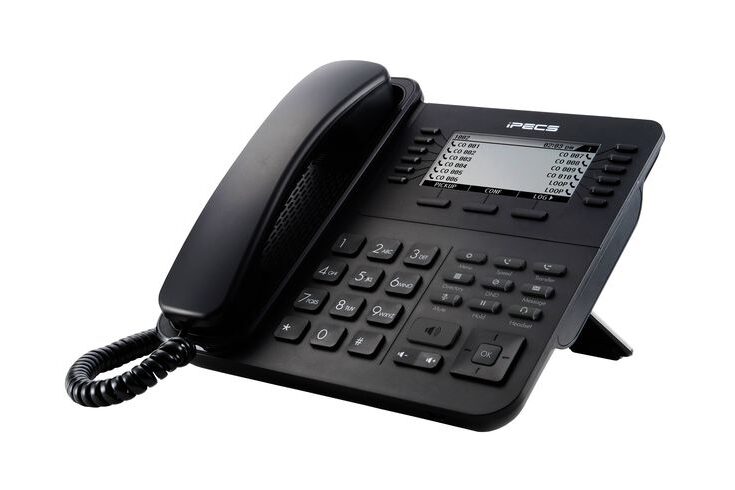
Before thqe instant ‘send’ of an email, the rhythm of communication was slow and deliberate, centered around the postal service and landlines. For simple greetings, a letter could take days or even weeks to cross the country. If you wanted to talk to a distant friend, you had to pick up the landline phone, often reserved only for essential or urgent conversations due to the high cost of long-distance calls. These calls were typically expensive, sometimes costing upwards of $0.50 per minute depending on the time of day and distance, making them a luxury, not a daily habit. We had to be patient, knowing a response wasn’t a matter of minutes but a matter of days or more, giving every piece of communication a palpable sense of weight and importance. The feeling of receiving a handwritten letter was a special, often unexpected event that brightened the day.
2. The Family Phone Was a Battlefield
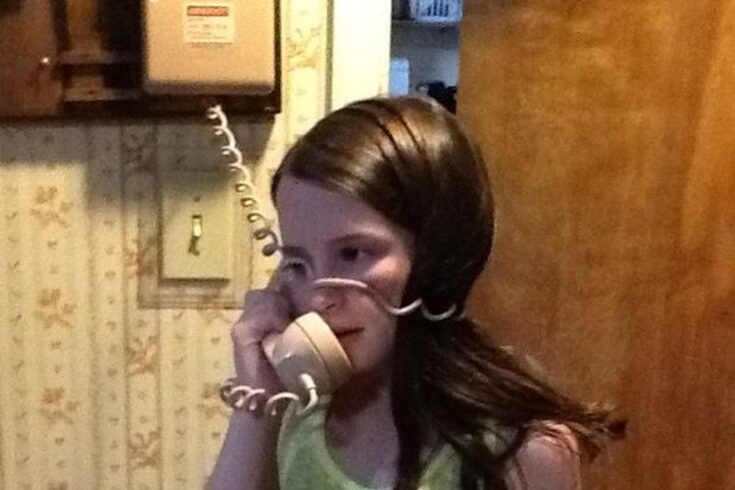
In most households, a single landline served as the only means of external voice communication, making it the central artery of the home but also a constant source of friction. Teens would spend hours whispering to friends, often stretching a coiled cord into a hallway or closet for privacy, while parents anxiously watched the clock, knowing every minute added to a mounting monthly bill. The busy signal was a common soundtrack to life, meaning if someone was on the phone, the line was completely unavailable for incoming calls or, crucially, for connecting to the internet. This created endless internal household drama, with the constant threat of being told, “Get off the phone!” This shared scarcity meant that every phone call, and eventually every connection attempt, was a negotiation of time and necessity.
3. News Arrived Once a Day
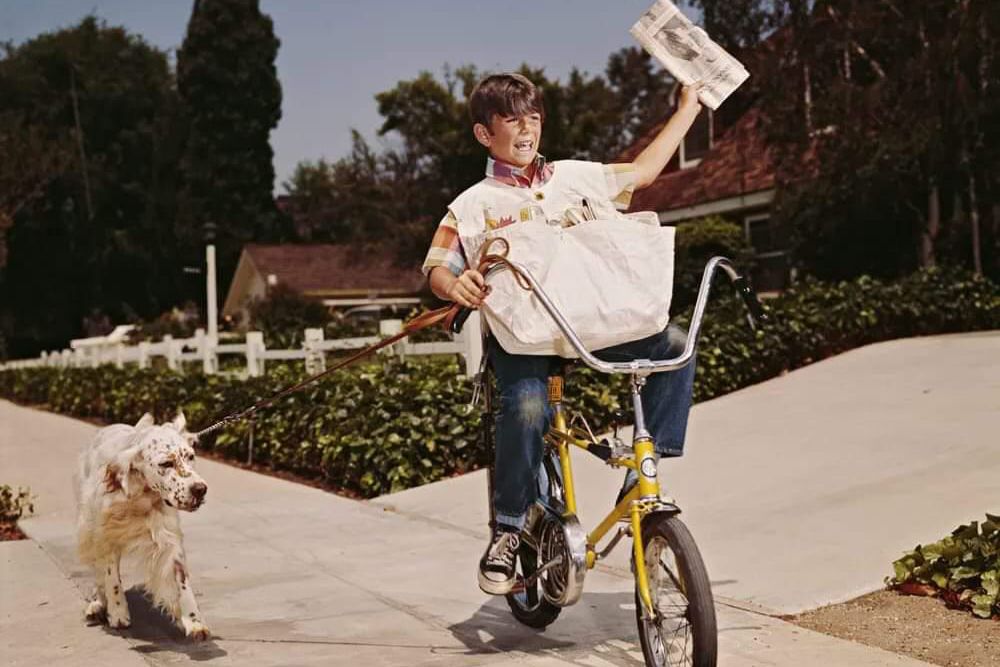
The twenty-four-hour news cycle we know today was a foreign concept; news arrived on a fixed, scheduled rhythm. People depended on the morning newspaper—delivered to the doorstep—and the evening television newscast to stay informed. If a major world event happened at, say, 11:00 AM, you wouldn’t get the full story with commentary and analysis until the six o’clock news. Midday updates were sporadic and often came from listening to the AM radio in a car or relying on word-of-mouth. This meant that information was consumed slowly, often thoughtfully, and with a shared understanding of what everyone knew at a certain time. This slower pace forced a greater reliance on scheduled, high-quality reporting rather than the constant, real-time firehose of information we experience now.
4. Sharing Photos Meant Patience and Film
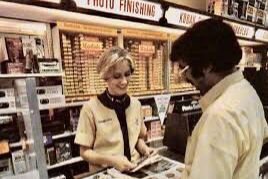
Sharing a memory involved a multi-step, days-long process, a world away from the instant upload of a digital camera or phone. To capture a moment, you needed a physical camera loaded with film—typically 24 or 36 exposures. Once the roll was finished, you took it to a pharmacy or photo lab, where you’d wait anywhere from a day to a week for the film to be developed and the prints to be made. To share the vacation photos with family or friends who lived far away, you had to physically mail the prints in an envelope. By the time they arrived, the trip was a distant memory, but the delayed gratification made every photo a treasured physical object, a tangible piece of the past that was worth the wait.
5. The Modem’s Screech Was the Future
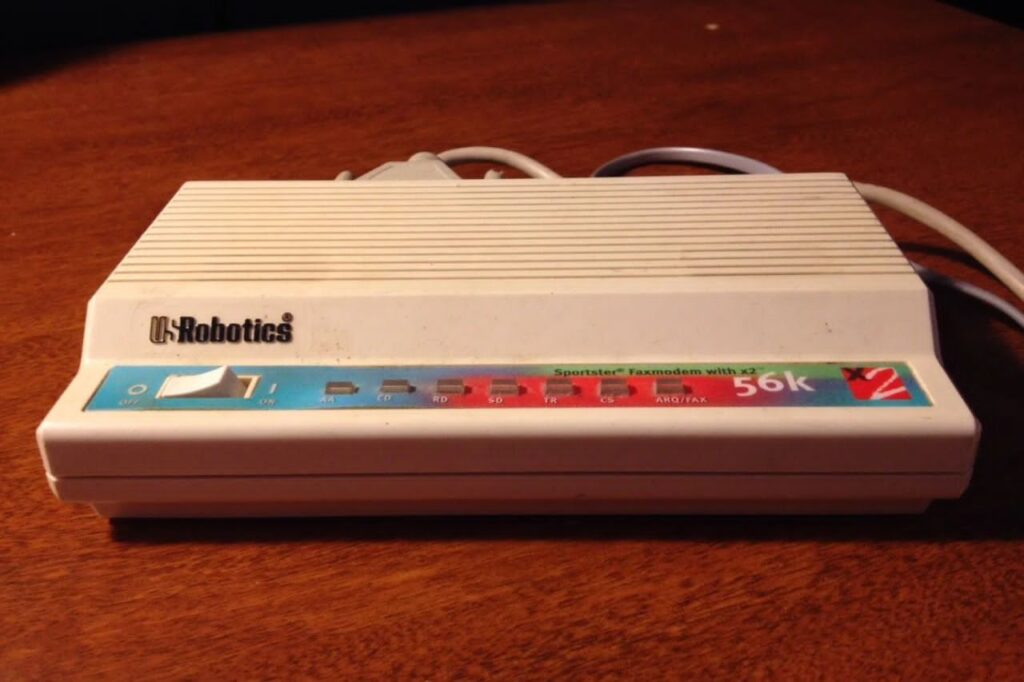
The sound of a dial-up modem connecting was not just noise; it was the iconic soundtrack to entering the digital world. This sequence of high-pitched squeals, static bursts, and rhythmic clicks, known as the handshake, was the sound of the modem negotiating a connection and data transfer rate—often as slow as 28.8 or 56 kilobits per second (kbps)—with the internet service provider (ISP). Families would often gather around the beige desktop computer and listen in awe as the machine seemingly talked to the outside world, announcing, “You are now connected.” This ritualistic, noisy process was a dramatic precursor to accessing email and websites, signifying a major event that briefly tied up the phone line but unlocked a new, thrilling world of online possibility.
6. Email Felt Like Instant Magic
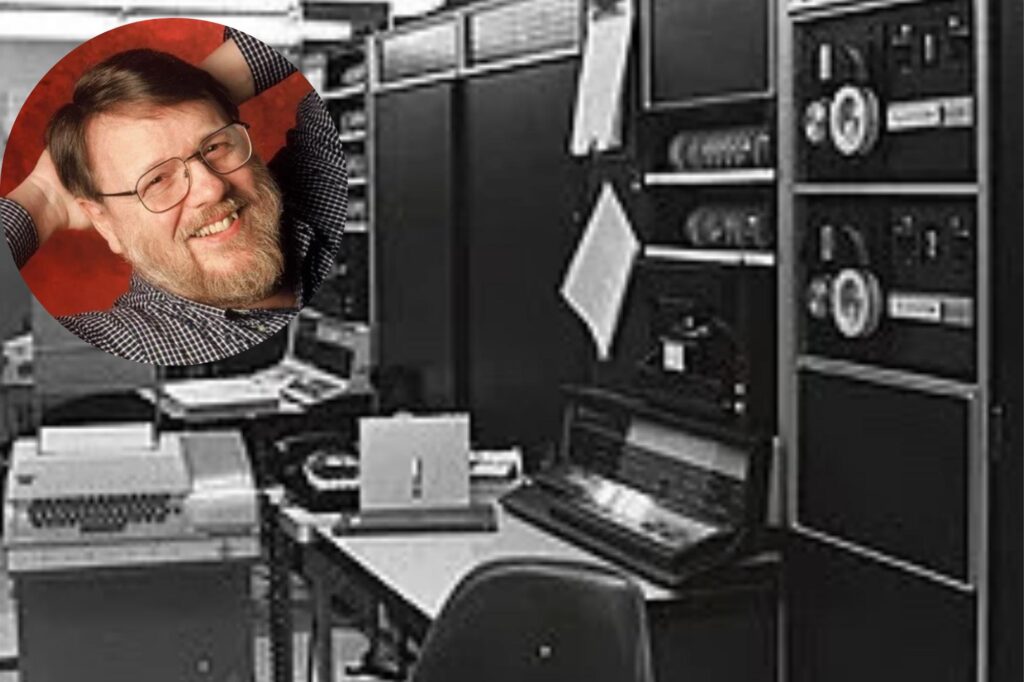
The arrival of email revolutionized personal communication, presenting a monumental leap in speed and accessibility compared to the traditional postal system. For the first time, you could type a message and have it delivered across the globe in seconds, a stark contrast to the days or weeks a physical letter required. Not only was it faster than snail mail, but it was also dramatically cheaper than a long-distance phone call. This new medium allowed for less structured, more frequent communication without the pressure or cost of a real-time conversation. The thrill of seeing a number next to your inbox, indicating “You’ve Got Mail,” transformed the personal computer from a simple tool into an essential window to global connection.
7. AOL Made Logging On a Ritual
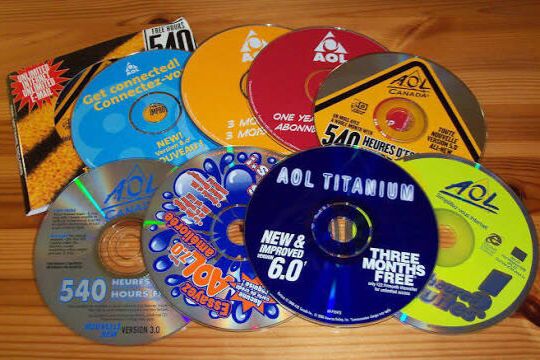
America Online, or AOL, made the internet accessible and user-friendly for millions, turning the act of logging on into a familiar, multi-sensory ritual. The experience often began with inserting the ubiquitous free trial CD-ROM into the computer. Then came the anticipation of the modem’s connecting sound, followed by the comforting and definitive voice recording announcing, “Welcome!” and the iconic, electrifying declaration, “You’ve Got Mail!” AOL’s user interface, with its organized “Channels” and searchable “Keywords,” acted as a simple, curated guide through the World Wide Web. This structure turned the abstract internet into a navigable, social space, transforming the home computer into the hub of online life.
8. Chat Rooms Enabled Global Talk
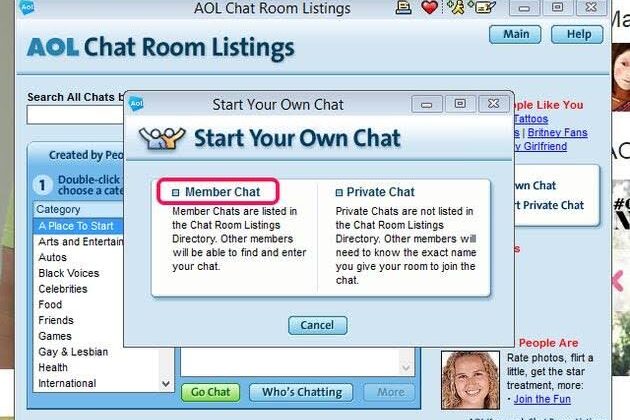
Before social media, chat rooms were the primary meeting grounds, opening the door to spontaneous, real-time conversations with strangers from around the world. Platforms like AOL Chat and Yahoo! Chat allowed users to join themed rooms—from music to sports, dating, or specific locations—simply by typing a command. This was the first time communication felt truly borderless and unconstrained by geography, allowing people to form friendships, debates, or simply pass the time with others who shared a niche interest. It was a digital Wild West of identity, where a screen name was your only credential, and the conversation was fluid, instant, and often the most exciting part of being online.
9. AIM Away Messages Were First Statuses
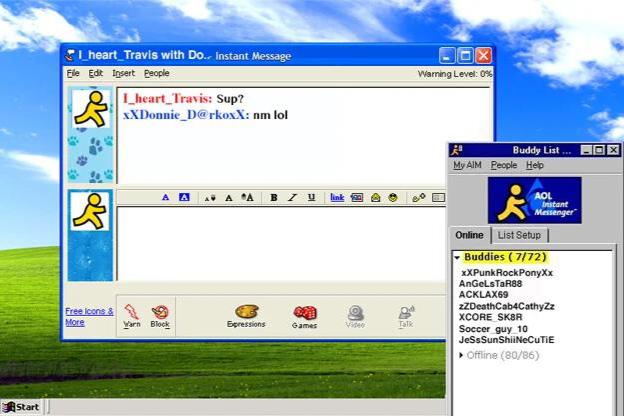
The Away Message feature in AOL Instant Messenger (AIM) was the earliest form of the social media status update or “story.” When a user stepped away from their computer, they could broadcast a short, personalized message to their entire Buddy List. These messages were often creative and personal: quoting song lyrics, sharing cryptic inside jokes, announcing their current activity, or expressing a fleeting mood. Checking a friend’s away message became a common habit, offering a momentary, passive glimpse into their personality and current state of mind. It was a simple yet performative act of self-expression that taught a generation how to manage and broadcast a curated digital presence.
10. Screen Names Were Digital Identities
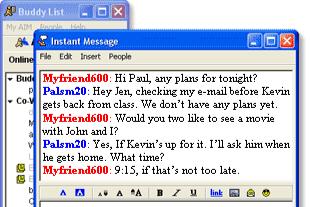
Choosing a screen name was the foundational step in crafting an online identity, offering a chance to be playful, mysterious, or aspirational. Names like ‘Sk8rBoi,’ ‘MysticGrrl,’ or ‘CoolKid93’ were not just identifiers; they were carefully selected alter egos or personal brands that often said more about a user’s interests, dreams, or perceived personality than their real name ever could. This handle was the sole public representation of a person in chat rooms and instant messaging, granting a level of anonymity that allowed for greater self-exploration and social experimentation. For many, it was the first meaningful opportunity to define and present a separate, purely digital self.
11. The Buddy List Was Social Currency
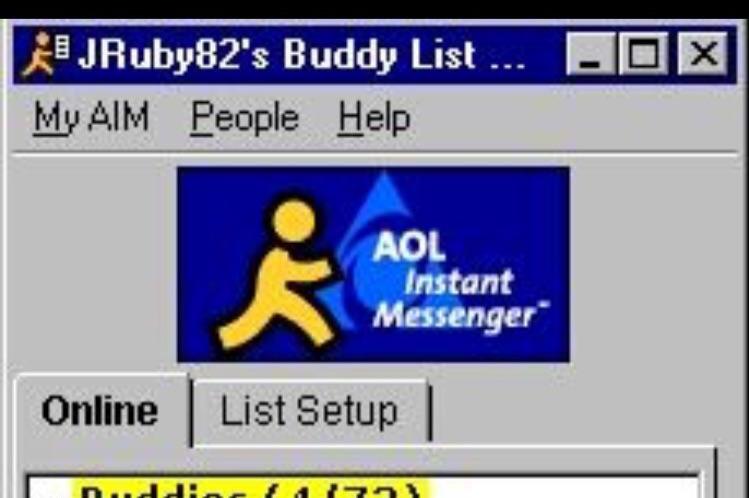
More than just a contact list, the Buddy List was a dynamic, live feed that measured and displayed social presence, making it one of the earliest forms of a social network feed. The simple presence of a name, especially a crush’s, with an illuminated green status light indicating they were online, was often the source of instant excitement and anticipation. Conversely, an empty or small list could feel isolating. This real-time display of who was available and who was not created a new kind of social anxiety—the fear of missing out, or FOMO—and a new form of social currency. It taught a generation to monitor the digital presence of others, foreshadowing the continuous monitoring of feeds and status updates that would come to define modern social media.
12. Broadband Ended the Line Wars
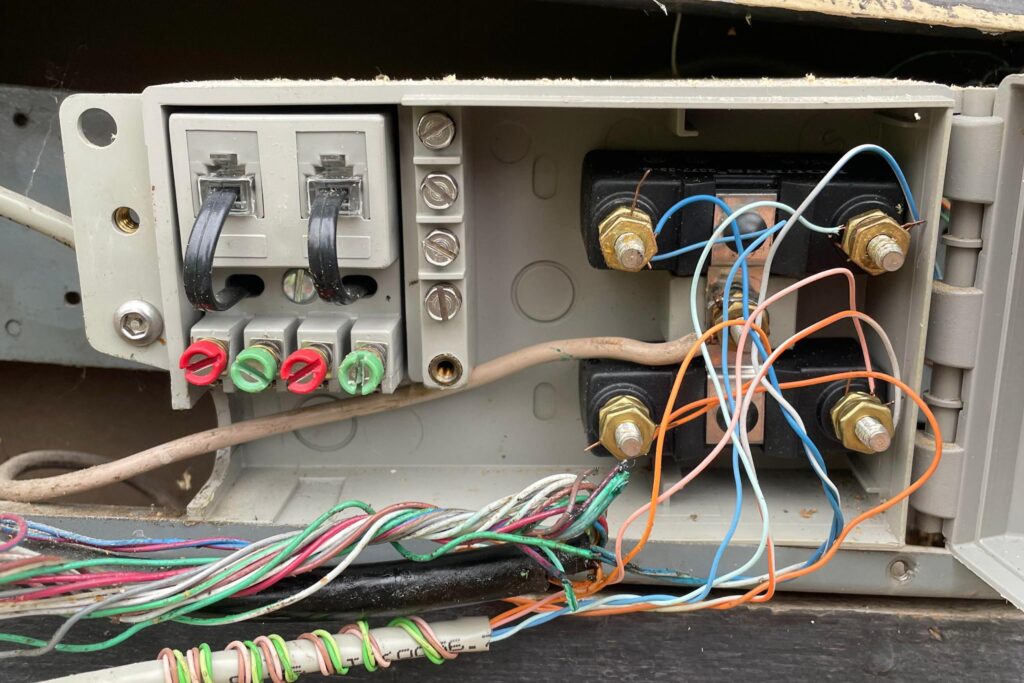
The widespread adoption of broadband internet access—first through technologies like DSL and cable—marked the end of a core tension in the dial-up household: the fight over the single phone line. Broadband offered an always-on connection that did not require the phone line, liberating families from the constant threat of a busy signal and the parental scream of, “Get off the internet, I need to make a call!” This technological shift transformed the internet from a scheduled, temporary event into an ambient, constant fixture of daily life. The freedom to check email or browse a website without disrupting a voice call was a monumental leap, making the internet less of a destination and more of a seamlessly integrated utility.
13. Email Became Workplace Essential
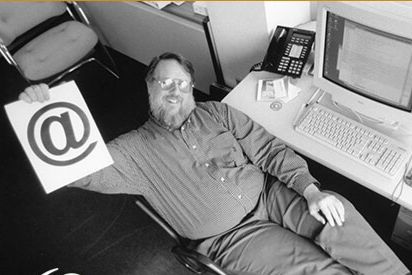
While initially treated as a fun, novel communication tool in the home, email quickly and forcefully took over the modern workplace, becoming the essential infrastructure for global business. It rapidly displaced traditional methods like internal memos, paper letters, and, eventually, the fax machine. This shift dramatically sped up internal and external communication, allowing decisions to be made and documents to be shared almost instantly across time zones. However, this convenience also created a new kind of pressure, turning the daily inbox into a constant, demanding battleground of correspondence. What started as an exciting new way to chat with friends quickly became the formal, indispensable backbone of professional communication at every level.
14. MySpace and Facebook Rewrote Connection
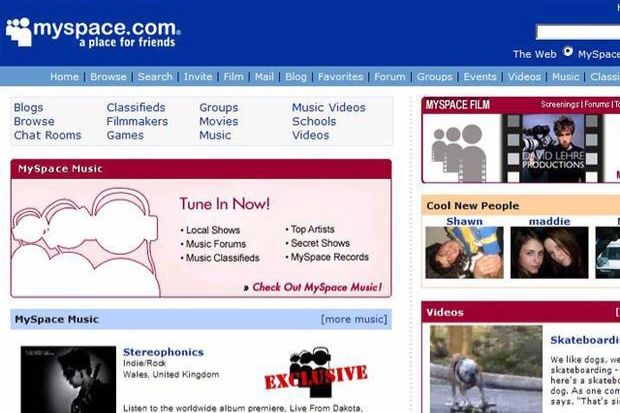
The arrival and eventual dominance of early social media giants like MySpace and Facebook fundamentally changed the nature of online identity and connection. Unlike the fleeting, ephemeral chat windows of AIM, social media profiles created a sense of permanence. A user’s identity was no longer just a cryptic screen name; it became a comprehensive profile with real photos, biographical details, and a continuously updated timeline of thoughts and activities. This shifted communication from the private, one-to-one or small-group chats of instant messaging to public, one-to-many broadcasts. Suddenly, your entire social circle could passively monitor your life events, fundamentally changing the dynamic between private communication and public performance.
15. Instant Messaging Never Truly Died
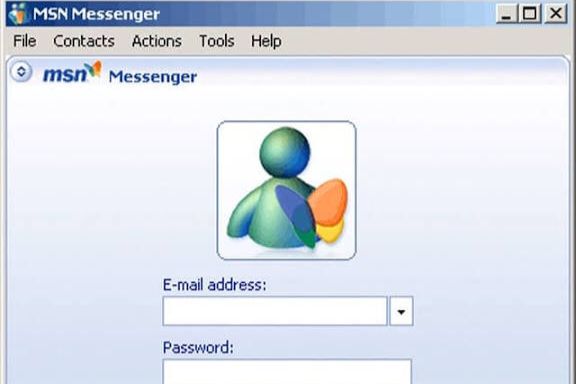
The core function of real-time text-based chat, pioneered by programs like AIM and MSN Messenger, has never left the digital landscape; it has only continuously evolved and fractured across different platforms. The simple, direct interface and real-time typing experience were carried forward by successors like Google Talk (Gchat), and then segmented into specific use-cases: professional tools like Slack, gaming-centric platforms like Discord, and mobile-first, global apps like WhatsApp and Telegram. Though the brand names and features have changed, the central behavior of typing and responding to friends or colleagues in a live, continuous conversation remains one of the most essential and heavily used methods of digital communication worldwide.
16. The Modem Handshake Is Nostalgia
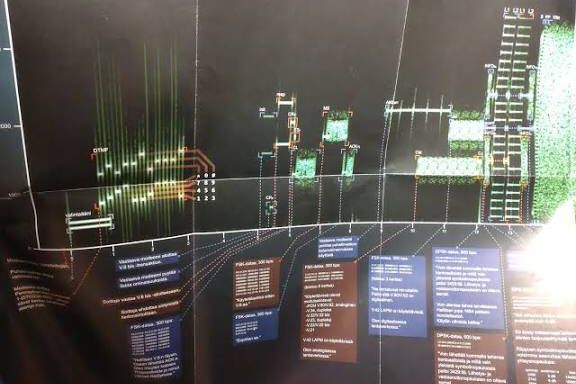
The distinct, complex sequence of electronic sounds—the handshake—that signaled a successful dial-up connection has become an auditory time capsule for a generation. This squeal, which was once the sound of pure frustration when it failed and pure relief when it succeeded, is now a potent trigger for nostalgia. It is instantly recognizable as the soundtrack to the late 1990s and early 2000s, evoking memories of sitting in front of a heavy, beige-colored desktop computer and waiting patiently for the connection. This sound is no longer a technical noise; it is a cultural artifact that symbolizes the exact moment communication and information access changed forever.
17. From Scarcity to Digital Overload
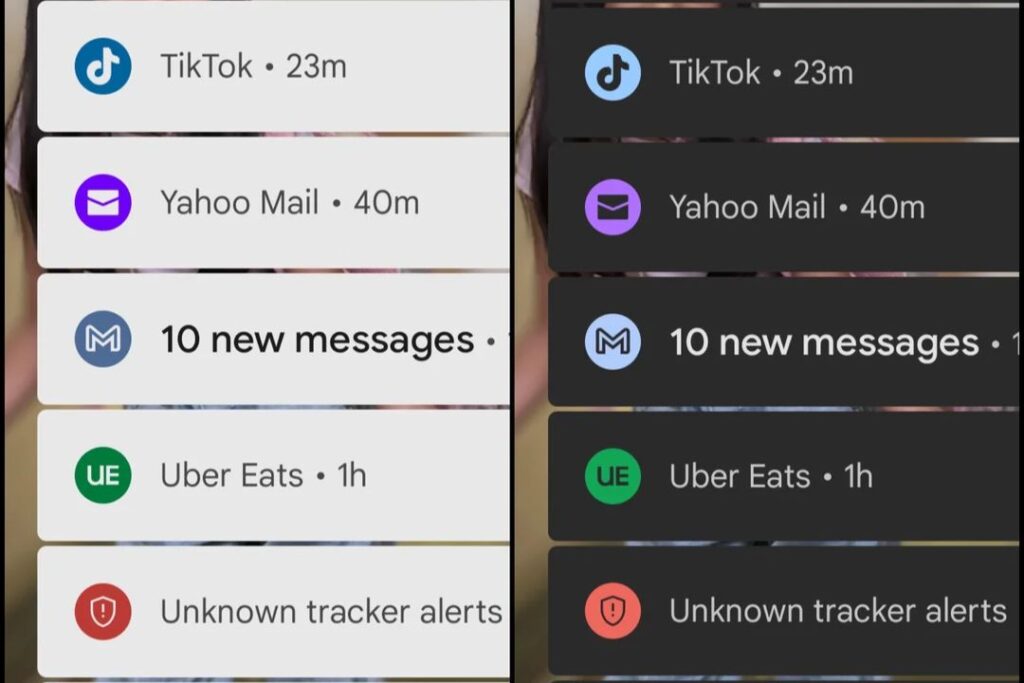
The journey from the dial-up era to the modern internet is a radical shift from scarcity to overwhelming abundance. Dial-up connections, with their inherent slowness, enforced a form of digital rationing; every minute online and every small download felt valuable and intentional. Today, we are constantly connected and inundated by a ceaseless stream of notifications, updates, and messages across multiple devices. What was once a slow, scheduled, and therefore special glimpse into the digital world now feels like an oppressive, required constant. This dramatic increase in volume and velocity has led many to yearn for the enforced simplicity and intentionality of the slower, dial-up days.
18. Dial-Up Built Today’s Digital Habits
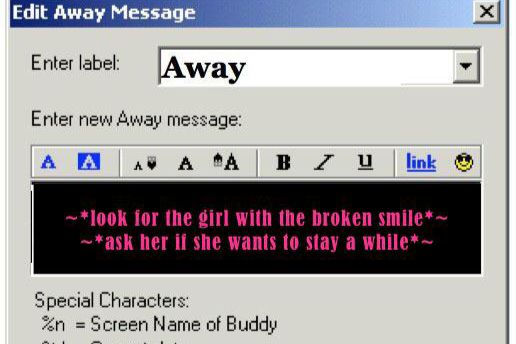
The foundational behaviors and features of the early internet were, in effect, the beta testing for the entire modern digital landscape. The AIM Away Message was the functional prototype for the social media status update. The Buddy List was the essential template for the modern friends list and activity feed. The invention of the creative screen name evolved into today’s curated social media handle or personal brand. The simple, text-based chat of AIM established the norms for all subsequent instant messaging and workplace communication platforms. Though the speed and complexity have changed, the fundamental ways we express, connect, and organize ourselves online were all conceived and practiced during the dial-up era.
19. We Traded Patience for Presence
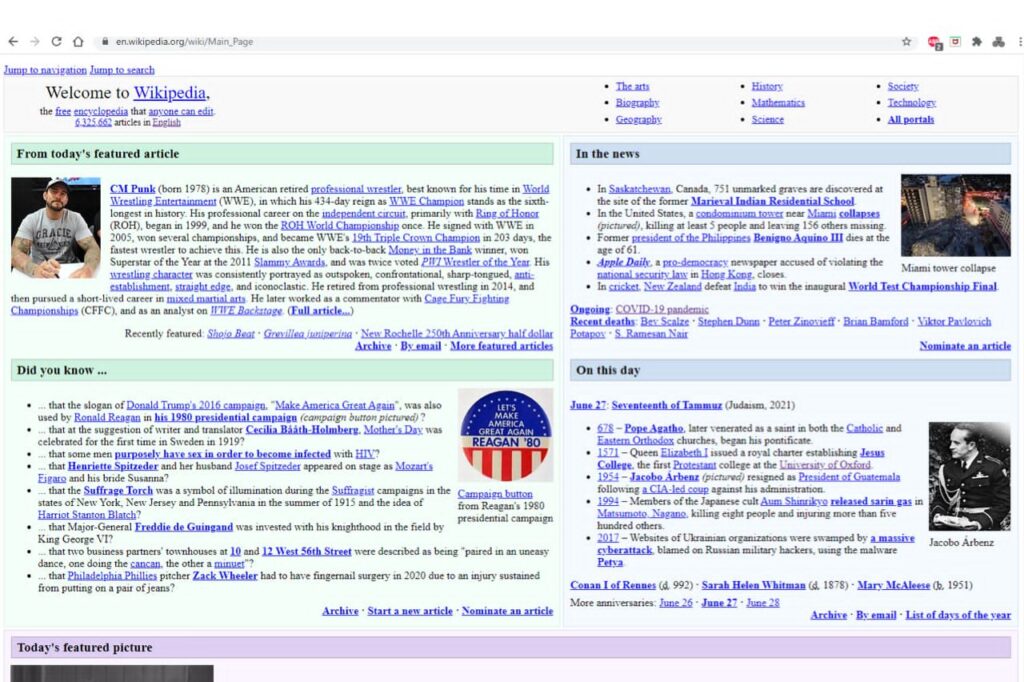
The defining characteristic of the dial-up age was the unavoidable necessity of patience: waiting for the modem to connect, waiting for a web page to load line-by-line, and waiting for a friend to reply to an email. This waiting created a sense of anticipation and made the eventual connection feel earned and meaningful. Today, the world is one of instant presence—everything is always on, immediately accessible, and endlessly streaming. While the speed is undeniably more convenient, the constant immediacy has made communication feel more fleeting and less impactful. The dial-up era serves as a powerful reminder that communication was once a dedicated, slower event that could sometimes feel a little more valuable for the time it took.
The dial-up days were not just slower; they were a cultural moment that fundamentally shaped how we interact with technology and with each other. From the noise of the modem to the thrill of a green dot on the Buddy List, this era built the foundation for the always-on, interconnected world we live in now. It reminds us that sometimes, the magic is in the waiting.What is your favorite memory or sound from the dial-up era?
This story Dial-Up Dreams: The Internet We Grew Up On was first published on Daily FETCH


